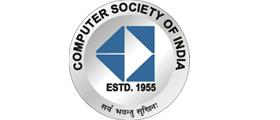Planet Simulation In Python can be hard to complete it from scholars end. In Python, simulating the movement of planets could be a significant as well as captivating project. It accesses us in investigating the orbital mechanics and gravitational effects in an extensive manner. With the application of Newton’s laws of motion and gravitation, we provide an elaborate guide for aiding you in executing a basic N-body simulation for planets in Python:
Step-by-Step Execution
Step 1: Load Required Libraries
For our project, it is required to import necessary libraries.
import numpy as np
import matplotlib.pyplot as plt
from matplotlib.animation import FuncAnimation
Step 2: Specify Constants and Preliminary Conditions
Crucially, we have to determine the constants and basic conditions.
# Gravitational constant (in appropriate units)
G = 6.67430e-11 # m^3 kg^-1 s^-2
# Time step (seconds)
dt = 86400 # one day
# Number of steps in the simulation
num_steps = 365 # one year
# Planetary data: [mass (kg), initial position (x, y) in meters, initial velocity (vx, vy) in meters/second]
sun = [1.989e30, [0, 0], [0, 0]]
earth = [5.972e24, [1.496e11, 0], [0, 29780]]
mars = [6.4171e23, [2.279e11, 0], [0, 24007]]
# Combine the planets into a single list
planets = [sun, earth, mars]
Step 3: Determine Functions to Estimate Forces and Update Placements
In order to compute forces and upgrade positions, we need to specify functions.
def compute_gravitational_force(p1, p2):
m1, m2 = p1[0], p2[0]
r1, r2 = np.array(p1[1]), np.array(p2[1])
distance_vector = r2 – r1
distance = np.linalg.norm(distance_vector)
force_magnitude = G * m1 * m2 / distance**2
force_vector = force_magnitude * distance_vector / distance
return force_vector
def update_positions(planets, dt):
forces = []
for i, p1 in enumerate(planets):
net_force = np.array([0.0, 0.0])
for j, p2 in enumerate(planets):
if i != j:
net_force += compute_gravitational_force(p1, p2)
forces.append(net_force)
for i, planet in enumerate(planets):
mass, pos, vel = planet
acceleration = forces[i] / mass
vel += acceleration * dt
pos += vel * dt
planets[i] = [mass, pos.tolist(), vel.tolist()]
return planets
Step 4: Execute the Simulation
Then, simulation has to be carried out.
# Lists to store positions for plotting
positions = {planet[1]: [] for planet in planets}
for step in range(num_steps):
planets = update_positions(planets, dt)
for i, planet in enumerate(planets):
positions[i].append(planet[1])
# Convert positions to numpy arrays for easy plotting
for key in positions:
positions[key] = np.array(positions[key])
Step 5: Visualize the Findings
Output of the execution process should be visualized.
plt.figure(figsize=(8, 8))
for i, planet in enumerate(planets):
plt.plot(positions[i][:, 0], positions[i][:, 1], label=f’Planet {i}’)
plt.scatter(positions[i][-1, 0], positions[i][-1, 1], s=50) # mark the final position
plt.xlabel(‘X Position (m)’)
plt.ylabel(‘Y Position (m)’)
plt.title(‘Planetary Orbits’)
plt.legend()
plt.grid(True)
plt.axis(‘equal’)
plt.show()
Step 6: Design an Animation (If it is required)
If it is needed, focus on designing animation. For simple interpretation and advanced captivating visuals, this animation efficiently enhances the simulation process.
fig, ax = plt.subplots(figsize=(8, 8))
lines = []
for i, planet in enumerate(planets):
line, = ax.plot([], [], label=f’Planet {i}’)
lines.append(line)
def init():
ax.set_xlim(-3e11, 3e11)
ax.set_ylim(-3e11, 3e11)
return lines
def update(frame):
for i, line in enumerate(lines):
line.set_data(positions[i][:frame, 0], positions[i][:frame, 1])
return lines
ani = FuncAnimation(fig, update, frames=num_steps, init_func=init, blit=True, interval=50)
plt.xlabel(‘X Position (m)’)
plt.ylabel(‘Y Position (m)’)
plt.title(‘Planetary Orbits’)
plt.legend()
plt.grid(True)
plt.axis(‘equal’)
plt.show()
Planet simulation Projects
Choosing a project on simulating planets is not an easy task, you must explore several research areas to detect promising topics which must contribute modern or innovative concepts to the existing platform. Based on diverse areas, some of the noteworthy topics for simulating planets in Python are offered below:
- Gravitational Interactions in Multi-Planet Systems
- Among different planets, we need to explore gravitational interactions and on the basis of orbital flexibility, assess their critical implications.
- Exoplanet Detection and Simulation
- By utilizing transits and radial velocity methods, detection approaches must be simulated for exoplanets.
- Habitable Zone Analysis for Exoplanets
- The scenarios should be simulated which is crucial for a planet to be in a star’s habitable region.
- Atmospheric Simulation of Exoplanets
- Regarding the exoplanets, design the atmosphere and in preserving life, evaluate its significant capability.
- Planetary Formation and Accretion
- In protoplanetary disks, the process of planetary development by means of accretion ought to be simulated.
- Tidal Forces and Planetary Evolution
- Depending on orbital evolution and planetary rotation, we have to examine the implications of tidal forces.
- Impact of Stellar Flares on Planetary Atmospheres
- Nearby to their stars, the effects of stellar flares on the atmospheres of planets are supposed to be simulated.
- Migration of Giant Planets in Protoplanetary Disks
- The migration routes of giant planets are required to be designed efficiently. In accordance with construction of terrestrial planets, assess their impacts.
- Simulation of Planetary Rings
- Considering planetary rings, concentrate on exploring development, motion and flexibility.
- Binary Star Systems and Planetary Orbits
- Specifically in binary star systems, it is significant to simulate the complicated orbital motion of planets.
- Planetary Climate Modeling
- To interpret the climate systems and weather patterns, climate models are meant to be designed for various kinds of planets.
- Planetary Magnetic Field Simulation
- On residence suitability and planetary atmospheres, we must examine the production and implications of magnetic fields.
- Surface Evolution of Rocky Planets
- In the course of time, focus on constructing rocky planets by designing geological processes.
- Simulation of Water Worlds
- Incorporating the crucial water coverage, the motion and probable residences of planets are supposed to be analyzed.
- Impact Crater Formation and Consequences
- The development of impact craters should be simulated and on planetary platforms, examine their critical implications.
- Planetary Tectonics and Volcanism
- Particularly on planets, design tectonic and volcanism and for residence quality, evaluate their significant effects.
- Formation of Gas Giant Planets
- Considering the various stellar platforms, processes which include in creating gas giants are meant to be analyzed by us.
- Simulation of Icy Moons and Their Subsurface Oceans
- With subsurface oceans, the probable habitation adequacy of icy moons must be examined.
- Orbital Resonances and Planetary Stability
- While preserving the flexibility of planetary systems, we have to explore the performance of orbital resonances.
- Simulation of Planetary Eclipses and Transits
- As regards planetary eclipses and transits, it is important to design observational signatures.
- Dust and Gas Dynamics in Protoplanetary Disks
- In protoplanetary disks, we plan to examine the communication among gas and dust. Mainly, in the process of planet creation, it is advisable to explore its contribution.
- Simulation of Planetary Atmospheres in Binary Systems
- On the atmospheres of the planets, the impacts of binary stars are supposed to be analyzed.
- Planetary Mass and Composition Determination
- Specify the mass and composition of exoplanets through simulating various approaches.
- Planetary Habitability Index
- To assess the residential suitability of exoplanets, a simulation-based index ought to be created effectively.
- Thermal Evolution of Planetary Interiors
- Regarding the interiors, our team intends to design thermal evolution and specialization.
- Atmospheric Escape and Its Effects on Planets
- The mechanisms of atmospheric escape have to be examined and on planetary atmospheres, we have to evaluate its critical effects.
- Simulation of Planetary Aurorae
- Considering the diverse types of planets, significant conditions are supposed to be explored.
- Planetary System Architecture and Formation
- Across various types of stars, it is advisable to simulate the configuration and structure of planetary systems.
- Effects of Stellar Evolution on Planetary Systems
- On the orbits and atmospheres of neighbouring planets, the implications of stellar evolution should be simulated by us.
- Simulation of Moons and Their Orbital Dynamics
- Around planets, we should investigate the configuration, orbital motion and flexibility of moons.
- Simulation of Planetary Rings and Their Stability
- To attain the flexibility of planetary ring systems, essential conditions must be explored.
- Radiative Transfer in Planetary Atmospheres
- In planetary atmospheres, interpret the thermal distribution through designing the process of radiative transfer.
- Planetary Surface Weathering Processes
- Depending on planetary surfaces, we need to simulate the weathering processes and on the basis of the planet’s emergence, analyze their impacts.
- Simulation of Polar Ice Caps on Planets
- According to the various types of planets, the development and seasonal changes of polar ice caps must be explored.
- Planetary Albedo and Climate Modeling
- Based on climate and residential suitability, it is important to examine the impacts of planetary albedo.
- Simulation of Tidally Locked Planets
- As we reflect on tidally locked planets, focus on designing climate and atmospheric motion.
- Interaction Between Planetary Magnetic Fields and Stellar Wind
- Among planetary magnetic fields and stellar wind, we have to explore communication.
- Simulation of Volcanic Activity on Exoplanets
- On exoplanets, concentrate on exploring the capability for volcanic eruptions. As regards residential suitability, assess its critical impacts.
- Simulation of Greenhouse Effect on Different Planets
- Regarding the diverse types of planets, it is approachable to interpret the climate systems through creating the greenhouse effect.
- Planetary Biosignatures and Their Detection
- Especially on exoplanets, we must simulate the probable Biosignatures and their detection approaches in an efficient manner.
- Simulation of Planetary Rotation and Axial Tilt
- On the basis of residential suitability and planetary climate, the impacts of rotation and tilt of the axis are supposed to be explored.
- Simulation of Planetary Surface Erosion Processes
- As regards planetary surfaces, we have to examine the erosion process and on geomorphic conditions, analyze the critical implications.
- Atmospheric Composition and Climate Change on Exoplanets
- In accordance with the climate of exoplanets, focus on designing the impacts of variations in atmospheric constituents.
- Simulation of Rogue Planets
- Regarding rogue planets, it is required to explore the specific features and possible residences.
- Simulation of Double-Planet Systems
- The motion and flexibility of double-planet systems are meant to be examined intensively.
- Simulation of Planetary Collisions and Their Aftermath
- It is advisable to design results of planetary collisions and on planetary systems, analyze their critical effects.
- Simulation of Planetary Aurora Borealis and Australis
- On diverse types of planets, conditions which are essential for the development of auroras have to be investigated by us.
- Simulation of Seasonal Changes on Planets
- By including multiple orbital parameters, seasonal variations on planets ought to be analyzed.
- Simulation of Exoplanet Atmospheres with High-Resolution Spectroscopy
- Through the utilization of high-resolution spectroscopy data, our team intends to design the seasonal variations on planets.
- Simulation of Planetary Surface Conditions and Potential for Life
- Considering the exoplanet, we need to explore the area conditions and their capacity in preserving life.
Python is a highly regarded programming language that can be widely used for many complicated projects to provide optimal results. This article comprises crucial measures on simulating the movement of planets and potential research topics along with brief descriptions.
Simulating planet motion in Python may be an interesting endeavour, so let our specialists do it well.We cover a wide range of areas and stay current with the best project ideas and topics that fit your needs. Feel free to reach out to us to ensure your work is completed on time. Enjoy top-notch services from matlabsimulation.com.












